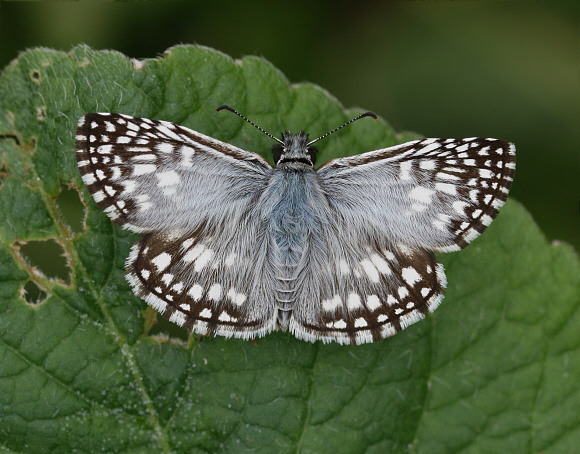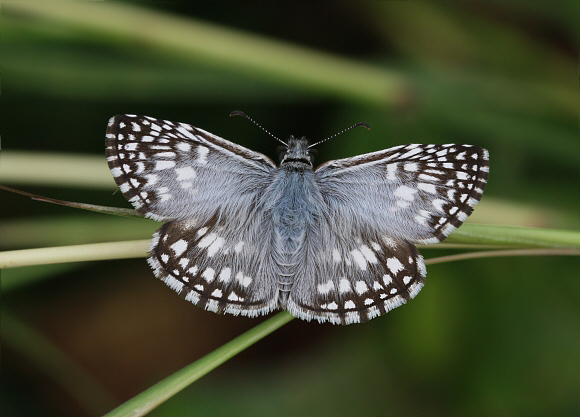
Introduction
The subfamily Pyrginae are characterised by their habit of basking with wings outspread, compared to the half-open position favoured by the Hesperiinae. In North and South America 580 species are placed within the tribe Pyrgini.
There are about 50 known species in the cosmopolitan genus Pyrgus, which has representatives in Europe and temperate Asia, as well as in North central and South America. The genus is instantly recognisable from the pattern of squarish white spots on a grizzled greyish ground colour, and by the conspicuous chequered fringes to the wings. All Pyrgus males have the basal half of the leading edge of the forewing folded back. Within the fold are hundreds of specialised wing scales called androconia, from which pheromones are disseminated to entice females into copulation.
This species occurs from the southern USA to Costa Rica. In South America it is replaced by the near-identical Pyrgus orcus.

Habitats
Pyrgus oileus can be found in a wide variety of disturbed semi-open habitats including pastures, rainforest clearings, roadsides, grassland / forest mosaics and farmland. It is commonest at altitudes between sea level and about 600m, but can be found to at least 1800m, probably much higher.
Lifecycle
The eggs are cream in colour and laid singly on the upperside of leaves. The caterpillar is yellowish green with darker blotches, a thin line along the back, and a black head. It feeds on the leaves of Malvastrum and Sida ( Malvaceae ). The pupa is greenish, or reddish-brown with a dark line along the back.
Adult behaviour
Both sexes bask on low herbage, bare ground or stones, with wings outspread. They have a rapid darting flight, always close to the ground. Males are territorial, using stones or small fallen branches as perches from which they dart up to intercept females or to challenge other males.
The butterflies visit a variety of low growing flowering plants for nectar, feeding with the wings held half open. At dusk they go to roost on dead flowers or on the terminal leaves of herbaceous plants growing in semi-open habitats such as grassy forest clearings, or along the edge of roadsides.

